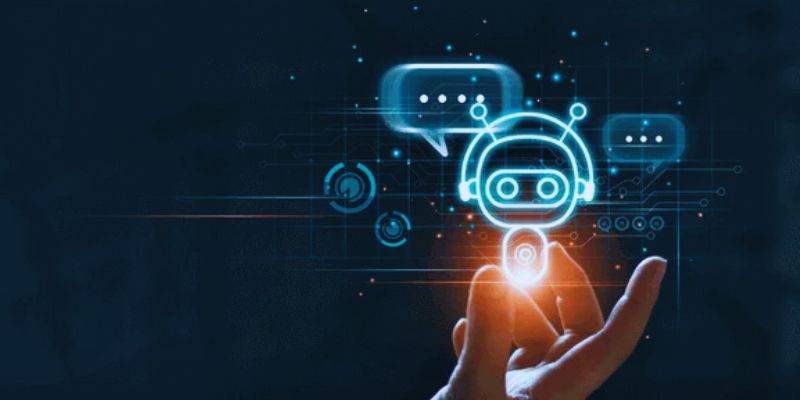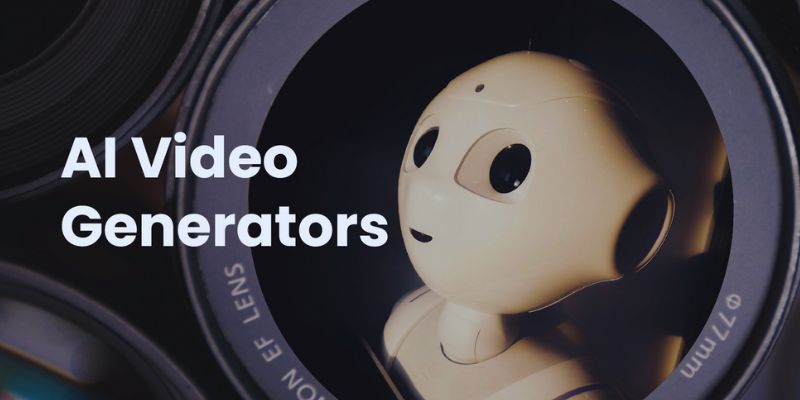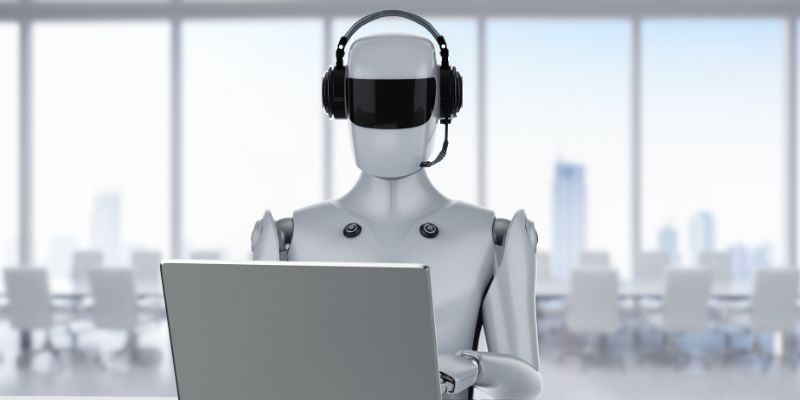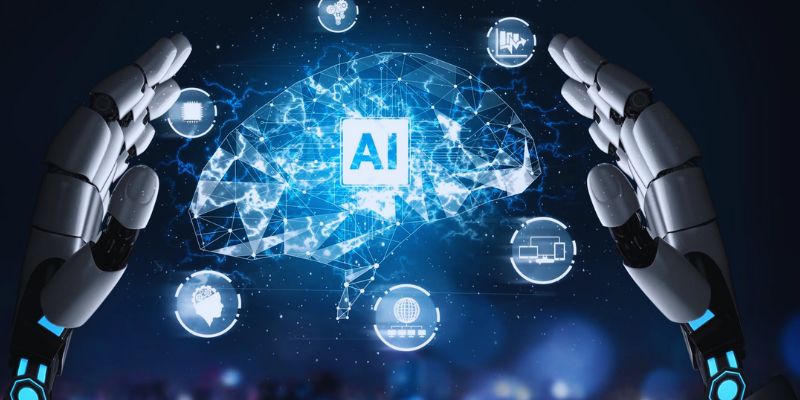An artificial intelligence chatbot can let companies easily get leads. It interacts with users of websites, gathers data, and develops possible consumers. AI-powered chatbots improve user experience by responding in real-time, unlike fixed forms. It is designed correctly; a chatbot generates leads automatically and qualifies candidates depending on specified criteria. It responds organically, driving consumers toward conversions and addressing questions. This automation raises efficiency while lowering human effort.
You need the correct tools, approaches, and optimization methods to create an artificial intelligence chatbot that records leads. The key is determining the ideal chatbot platform, configuring automated processes, and analyzing data. The process of building an artificial intelligence chatbot for lead generation is broken out in this guide. Use these techniques to increase involvement and conversions and strengthen marketing campaigns.

How do you build an AI chatbot that captures leads?
Below are the steps to create an AI chatbot that captures lead:
1. Define Your Lead Generation Goals
Identify your lead-generating goals before developing a chatbot. Tell us what information you require from candidates and how the chatbot will help consumers. Effective chatbot talks depend on well-defined objectives. Choose if you wish to compile phone numbers, emails, or information about consumer needs. That will enable the creation of conversation flows and gathering of useful data without overloading consumers. Think about the part the chatbot plays in your sales channel. Depending on responses, will it route them to a salesperson or qualified prospects? Better conversion rates depend on a disciplined strategy. Create quantifiable KPIs, including response rates, lead count, and degrees of engagement. Monitoring performance enables chatbot interactions to be better and leads to capture efficiency.
2. Choose the Right AI Chatbot Platform
Choosing a suitable AI chatbot platform is essential. Chatbot solutions powered by artificial intelligence abound on several sites, including Drift, ManyChat, and Chatfuel. Each has qualities that fit various corporate purposes. Search for systems supporting natural language processing (NLP), integrations, and automation. These characteristics enhance chatbot conversations, hence increasing their human-like and interesting quality. Ensure the chatbot links with analytics platforms, email marketing tools, and CRM systems. Effective tracking and management of leads depend on seamless connection. Think about the simplicity of usage here. Drag-and-drop builders on platforms help to streamline chatbot development. That lets companies create autonomous chatbot systems without much understanding of programming.
3. Design an Engaging Chatbot Script
The user interface is enhanced with a well-organized chatbot script. The natural, interesting, goal-oriented flow of the discourse should be present. To connect, start with a warm hello. Sort leads according to need by posing qualifying questions. For instance, a chatbot for an online retailer can inquire about preferred products to make pertinent recommendations. Keep answers brief and unambiguous. Long paragraphs should be avoided since consumers like quick responses. Incorporate multiple-choice answers to streamline user input and help them move naturally through the dialogue. Offer a simple way out. Let flawless handover if users wish to interact with a human agent. That guarantees lead conversion and higher customer satisfaction.
4. Implement Lead Capture Forms in Chatbot
Including lead capture in the chatbot development guarantees effective data collecting. The chatbot can acquire data interactively instead of guiding consumers to forms. Ask just for the necessary details. Requesting too much information upfront could deter consumers from finishing the form. To start, give your name, email, and phone number as a top priority. Personalize lead capture with conditional logic. When a user shows interest in a particular service, probe to improve lead quality. That makes chatbot solutions driven by artificial intelligence even more effective. Guarantee data security. Specify exactly how user data will be kept and accessed. Transparency helps to establish confidence and motivates more consumers to provide their information.
5. Optimize Chatbot Responses with AI and NLP
Natural discussions made possible by artificial intelligence and natural language processing improve chatbot interactions. AI-powered chatbots may respond personally as they grasp human intent. Using past consumer contacts, teach the chatbot. It helps, over time, increase accuracy and refine responses. A well-taught chatbot raises lead conversions and engagement. Try sentiment analysis. If consumers show annoyance, the chatbot can respond sympathetically or forward problems to human agents. It guarantees a nice client experience. Review chatbot answers often. Track chatbot accuracy and find typical questions by looking at interaction logs. Maintaining the chatbot relevant and efficient depends on optimizing responses.
6. Integrate Chatbot with CRM and Marketing Tools
Integration of CRM guarantees proper lead handling. A chatbot should automatically sync with your CRM whenever it gathers user data for improved monitoring. Link the chatbot to systems of email marketing. Lead-collecting automated chatbots can set off email sequences, nurturing prospects until they are ready for conversion. Sync chatbot data with tools for analytics. Knowing user behavior helps chatbot interactions to be better and lead-generating techniques to be strengthened. Create automated follow-up plans. The chatbot can provide incentives or reminders to inspire interaction if a lead does not convert immediately. That keeps your brand interesting for possible consumers.

7. Analyze Chatbot Performance and Optimize
Increasing chatbot efficiency depends on regular performance analysis. Track important numbers such as drop-off points, engagement, and conversion rates. Point up spots where people stop having talks. If a particular question causes drop-offs, modify the flow to maintain user interest. A/B tests several chatbot scripts. Variations in testing let you decide which conversational approach your audience finds most appropriate. Higher lead conversion rates follow from optimization. Get user comments. Motivational tools for users rating chatbot encounters: Their observations help hone responses and enhance the user interface.
8. Ensure a Seamless Handoff to Human Agents
An artificial intelligence chatbot should enhance human help rather than replace it. For difficult questions, some users would rather interact with a real person. Create automated triggers for escalation. Move the dialogue to a live agent if a chatbot cannot respond to a query. That guarantees users obtain correct knowledge. Help humans during business hours. If a handoff happens, ensure an agent is ready to help immediately. Delayed answers could cause missed opportunities. Help teams to properly manage leads produced by chatbots. Chatbot interaction history should be available to agents to carry on discussions smoothly.
Conclusion:
Lead-generating artificial intelligence chatbots automate client contacts, gather important information, and cultivate possible customers. Businesses may increase engagement and raise conversions with proper configuration. Selecting the correct chatbot platform, streamlining scripts, and including marketing tools within your projects is essential. AI-powered chatbot systems guarantee flawless interactions and offer users real-time responses. Optimizing and constant monitoring help chatbots run better. Human help mixed with a well-designed chatbot produces a seamless lead-generating mechanism. Now, begin creating your chatbot. Using AI-driven discussions, automate lead gathering, improve efficiency, and raise revenue.











